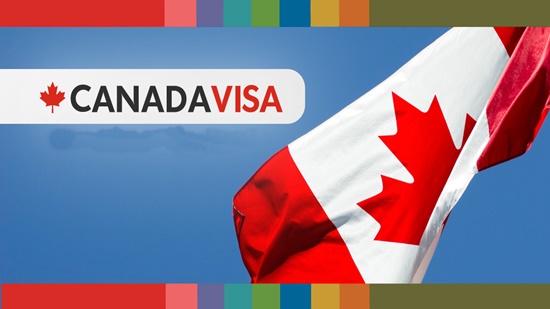SS1 Second Term Economics Past Questions And Answers
Senior Secondary School 1 Second Term Economics Questions with options and answers:
Question: What is the concept of comparative advantage in international trade?
a) Each country should produce everything it needs
b) Countries should specialize in producing goods with the lowest opportunity cost
c) Importing all goods is more efficient than domestic production
d) Equal distribution of resources among trading partners
Answer: b) Countries should specialize in producing goods with the lowest opportunity cost
Question: Define “elasticity of supply” in economics.
a) Responsiveness of quantity supplied to changes in price
b) Proportion of income spent on a good
c) Total quantity of a good demanded in the market
d) Total value of goods and services produced in a country
Answer: a) Responsiveness of quantity supplied to changes in price
Question: What is the purpose of fiscal policy in an economy?
a) Managing money supply and interest rates
b) Regulating international trade
c) Influencing economic activity through government spending and taxation
d) Controlling inflation through price ceilings
Answer: c) Influencing economic activity through government spending and taxation
Question: Explain the concept of a production function.
a) Relationship between input and output in the production process
b) Total revenue minus total cost
c) Impact of government regulations on businesses
d) Equilibrium point in the market
Answer: a) Relationship between input and output in the production process
Question: In the context of international trade, what is a trade surplus?
a) Excess of imports over exports
b) Balance between exports and imports
c) Excess of exports over imports
d) Total value of exports minus imports
Answer: c) Excess of exports over imports
Question: Define the term “elasticity of demand.”
a) Responsiveness of quantity demanded to changes in income
b) Responsiveness of quantity demanded to changes in price
c) Proportion of income spent on a good
d) Total quantity of a good demanded in the market
Answer: b) Responsiveness of quantity demanded to changes in price
Question: What is the purpose of a price floor in a market?
a) To support producers by setting a minimum price
b) To encourage consumer spending
c) To regulate international trade
d) To stabilize market prices
Answer: a) To support producers by setting a minimum price
Question: Differentiate between positive and normative economics.
a) Positive economics focuses on facts, while normative economics deals with values and opinions
b) Positive economics deals with ethical considerations, while normative economics focuses on empirical data
c) Both are terms for the same economic approach
d) Normative economics relies on mathematical models, while positive economics is descriptive
Answer: a) Positive economics focuses on facts, while normative economics deals with values and opinions
Question: What is a public good in economics?
a) Goods and services provided by private businesses
b) Goods that are non-excludable and non-rivalrous
c) Goods with high prices in the market
d) Goods and services only available to the government
Answer: b) Goods that are non-excludable and non-rivalrous
Question: Define the term “monopolistic competition.”
a) Market structure with a single seller dominating
b) Market structure with many firms selling similar but not identical products
c) Market structure with identical products and many buyers
d) Market structure with barriers to entry
Answer: b) Market structure with many firms selling similar but not identical products
Question: What is the difference between a progressive tax and a proportional tax?
a) Progressive taxes increase as income increases, while proportional taxes remain constant
b) Progressive taxes decrease as income increases, while proportional taxes increase with income
c) Both increase proportionally with income
d) Both decrease proportionally with income
Answer: a) Progressive taxes increase as income increases, while proportional taxes remain constant
Question: In the context of exchange rates, what is depreciation?
a) Increase in the value of a currency
b) Decrease in the value of a currency
c) Stable value of a currency over time
d) Complete withdrawal of a currency from circulation
Answer: b) Decrease in the value of a currency
Question: Define the term “perfect competition” in economics.
a) Market structure with a single seller dominating
b) Market structure with many firms selling similar but not identical products
c) Market structure with identical products and many buyers
d) Market structure with barriers to entry
Answer: c) Market structure with identical products and many buyers
Question: What is a trade deficit?
a) Excess of exports over imports
b) Balance between exports and imports
c) Excess of imports over exports
d) Total value of exports minus imports
Answer: c) Excess of imports over exports
Question: In the context of the circular flow of income, what does the government do?
a) Acts as a producer of goods and services
b) Regulates the money supply
c) Collects taxes and provides public goods and services
d) Represents the overseas sector in the economy
Answer: c) Collects taxes and provides public goods and services
Question: Define “regressive tax” in economics.
a) Tax that decreases as income increases
b) Tax that increases as income increases
c) Tax that remains constant regardless of income
d) Tax on international trade
Answer: a) Tax that decreases as income increases
Question: What is the purpose of the World Bank in the global economy?
a) Currency regulation
b) Trade liberalization
c) Providing financial aid to developing countries for development projects
d) Regulating interest rates
Answer: c) Providing financial aid to developing countries for development projects
Question: Explain the term “externalities” in economics.
a) Positive or negative side effects of economic activities on third parties
b) Fluctuations in the stock market
c) Government interventions in the market
d) Equilibrium point in supply and demand
Answer: a) Positive or negative side effects of economic activities on third parties.




